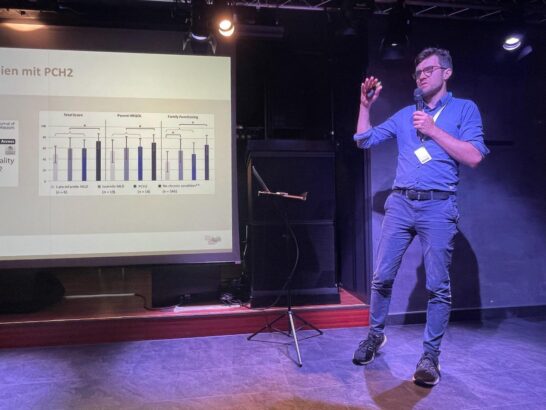Summary
In their 1995 study “The syndrome of autosomal recessive pontocerebellar hypoplasia, microcephaly, and extrapyramidal dyskinesia (pontocerebellar hypoplasia type 2): Compiled data from 10 pedigrees”, Barth et al. collected data from 10 unrelated family pedigrees. In total, the study contains data from 16 individuals suffering from PCH2. This was the first systematic description and categorisation of the disease with regards to symptoms, imaging findings and inheritance. This first review laid the foundation for further research into the disease.
Initial situation
This study by Barth et al. is the first description of PCH2 based on a large number of patients. Previously there were only individual case descriptions or descriptions based on a small number of patients. The study focussed on the inheritance, the natural course (symptoms and development) and the imaging of PCH2. In addition, it was investigated how the disease is progressing.
The pedigrees consisted of 6 pedigrees from the Netherlands, 2 from Sweden and 2 from Germany. All 16 patients showed microcephaly, pontocerebellar hypoplasia, early-onset severe chorea and severely impaired development.
Inheritance
Analysis of the pedigrees revealed that:
- parents of affected individuals were partially related by blood
- all parents in the largest pedigree analysed came from the same region
- the parents of affected individuals did not suffer from any neurological symptoms (“all or nothing principle”)
- both sexes were affected by the disease.
These points support the theory of autosomal recessive inheritance of the disease.
Symptoms
The pregnancies with the 16 PCH2 children were unremarkable. After birth, the children showed normal body measurements (height, weight, head circumference), while developping increasing microcephaly over the course of their lives. Already in the first weeks after birth, the children showed abnormalities in the form of shakiness, feeding and swallowing difficulties, and in 2 cases epileptic seizures. During the study, 12 out of the 16 children developed epilepsy. Development was severely restricted, although one child was able to sit independently. 6 children died in infancy.
Imaging of the brain
All available MRI images showed a significant reduction in the size of the pons and the cerebellum.
These images, combined with the autopsy findings of the deceased children, support the assumption of a progressive regression (atrophy) of brain tissue in PCH2.
Conclusion
This study provides a description of PCH2 in terms of inheritance, symptoms, progression as well as diagnosis by means of imaging. In doing so, it supported the then relatively new hypothesis that PCH2 was a disease on its own and outlined the diagnostic criteria. It was one of the first reviews of the disease and laid the foundation for further research into the condition.
Read the Complete Study
Find the complete study here:


